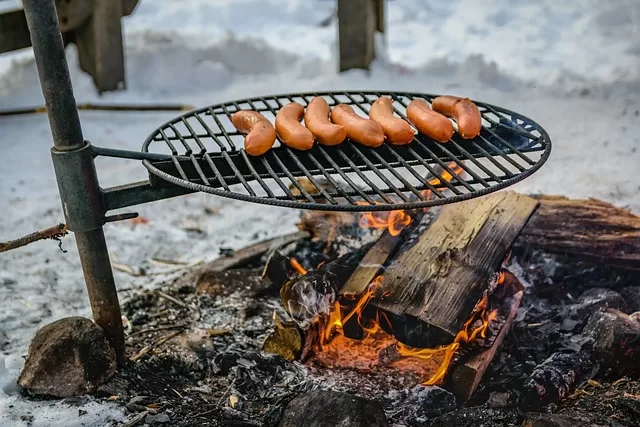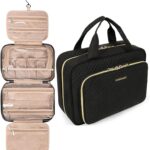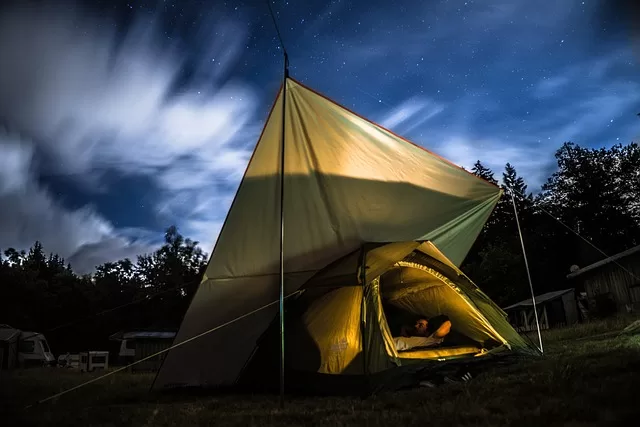Being an avid camper, I thought I had all the experience and knew all about camping and staying safe while on it, until the winter camping trip I decided to embark on with my friends. Even though I was hesitant to spend my vacation time in the freezing cold at first, the allure of a snow-covered landscape was too strong to resist. Yes, it wasn’t much of a surprise when I figured that winter camping was both adventurous and unique with memorable experiences.
However, Your initial guess was correct! Although I found winter camping charming and fun, I quickly learned that preparing for camping during the winter is on another level. I found this out the hard way because I had a first-hand experience with the downside of not properly preparing for winter like not packing the right gear for the season. It is important to prepare every step of the way; from making the appropriate choices when it comes to camping gear and equipment, camping clothing and apparel to stay warm, as well as camping gear repair and maintenance because the elements are at one of their angriest this season and you may need to fix one or two items by yourself.
Learning and knowing how to set up camp efficiently and how to pitch your tent like a pro is also paramount during winter camping, to ensure your safety and protection from the elements. This guide is simply me sharing the most useful tips for camping during the winter, from my experience to help others experience the joy and adventure of winter camping while staying safe and prepared.
Preparing for Winter Camping
Preparing for a winter camping trip requires some extra effort to ensure your safety and comfort. Let’s go through the steps you need to take to prepare for your trip.
Choosing the Right Campsite
Just like when going on a road trip and you need to plan your road trip itinerary and routes and choose the best road trip itineraries for you, the same goes for camping. You have to choose the right campsite that will protect you to a large extent from the elements during winter. You must look out for the best campsites for winter camping and go for what suits you. When choosing a campsite, consider the terrain and elevation. Look for a site that is sheltered from the wind and has good drainage to avoid being flooded in case of snow or rain. Look for sites that offer access to trails, water sources, and other amenities that you may need.
Checking the Weather Forecast
Check the weather forecast frequently in the days leading up to your trip, and make sure you pack accordingly. Winter weather can be unpredictable, so be prepared for sudden changes. Consider postponing your trip if a severe storm is forecasted.
Packing the Appropriate Gear
When packing for a winter camping trip, you need to bring warm, waterproof clothing, such as thermal base layers, a waterproof outer layer, a warm hat, gloves, and winter boots. A high-quality camping sleeping bag and pad with a temperature rating that suits the expected temperatures is essential, as well as a sleeping pad for insulation. Other essential gear includes a reliable camping tent and shelter, headlamps or flashlights, a camping stove and cooking gear, and a good-quality camping backpack and bag to carry everything.
Preparing the Vehicle for Winter Conditions
Before you set off, make sure your vehicle is equipped for winter driving conditions. Check the tires for adequate tread and pressure, and carry chains if required. Ensure your vehicle’s battery is in good condition and has enough charge to start in cold temperatures. Carry jumper cables in case of emergency. Make sure you have an emergency kit in your vehicle, including a shovel, extra food, and water.
Bringing the Necessary Food and Water
In winter, you need to consume more calories to stay warm, so bring high-energy, non-perishable food such as nuts, jerky, and energy bars. Bring a stove and cooking utensils to prepare warm meals and hot drinks. Pack enough water, and a reusable camping water bottle to stay hydrated, and consider bringing a water filtration system in case water sources are frozen or contaminated.
Dressing for Winter Camping
Dressing appropriately for winter camping is essential for staying warm and comfortable in cold and often wet conditions. Layering clothing, choosing the right boots, and wearing the right accessories can all make a big difference in your comfort level during your trip.
Layering Clothing Properly
When it comes to dressing for winter camping, layering is key. The layering system allows you to adjust your clothing based on your activity level and the outside temperature, keeping you warm and comfortable throughout your trip. Here are some tips for layering properly.
- Base Layer: Start with a base layer of moisture-wicking fabric that fits snugly against your skin. This layer will help to keep you dry by wicking sweat away from your body.
- Insulation Layer: Next, add an insulation layer such as a fleece or down jacket. This layer will trap your body heat and keep you warm.
- Outer Layer: Finally, add an outer layer that is waterproof and windproof to protect you from the elements. A good quality winter jacket and pants made from materials like Gore-Tex or similar will work well.
In addition to layering, here are some other things to consider when dressing for winter camping:
- Choose clothes made from synthetic or wool materials that will insulate even when wet.
- Wear a warm hat or balaclava to prevent heat loss from your head.
- Wear waterproof gloves or mittens to keep your hands warm and dry.
- Wear waterproof, insulated boots with good traction to keep your feet warm and prevent slipping on snow and ice.
- Remember to remove layers if you start to overheat, and add them back on if you start to feel cold.
Choosing the Right Winter Boots
When it comes to winter camping, choosing the right boots is crucial. You need footwear that is both warm and waterproof to protect your feet from cold and wet conditions. Remember to break in your boots before your trip to ensure they are comfortable and won’t cause blisters or other foot injuries. Here are some things to consider when choosing the right winter boots:
- Insulation: Look for boots with good insulation, such as Thinsulate or Gore-Tex. This will keep your feet warm and prevent heat loss, even in extremely cold temperatures.
- Waterproofing: Make sure the boots are waterproof, with a good quality Gore-Tex or similar membrane to keep your feet dry. Wet feet can lead to frostbite and other cold-related injuries.
- Traction: Choose boots with good traction to prevent slipping on snow and ice. Look for boots with a lugged sole for better grip, and consider getting boots with spikes or cleats if you plan to hike on icy terrain.
- Fit: Make sure your boots fit well and are comfortable. Look for boots with a snug fit that still allow room for thick socks. Boots that are too tight can restrict blood flow, leading to cold feet and potential injury.
- Height: Consider the height of the boots as well. For deep snow or wet conditions, boots that come up to the calf or higher may be necessary to keep snow and water out.
Wearing the Right Accessories
Wearing the right accessories, such as gloves, hats, and scarves, is crucial for keeping your extremities warm and preventing heat loss. Here are some tips to consider when choosing the right accessories for winter camping:
- Gloves or mittens: Look for gloves or mittens that are waterproof and insulated. Mittens are generally warmer than gloves, but gloves allow for more dexterity, which may be important for certain activities like cooking or setting up camp.
- Hat: Wear a warm hat or balaclava to prevent heat loss from your head. Consider a hat with ear flaps or a windproof material to protect your ears from the cold wind.
- Scarf: A scarf can be a useful accessory for protecting your face from the cold wind and for adding an extra layer of warmth to your neck and chest.
Staying Dry
Staying dry is also crucial for winter camping. Wet clothing can lead to hypothermia and other cold-related injuries, so it’s important to take steps to stay dry. Don’t forget to pack extra layers and waterproof bags to ensure you’re always prepared for changing weather conditions. Here are some tips to consider:
- Waterproof clothing: Wear waterproof clothing, including a waterproof jacket and pants, to keep yourself dry in wet conditions.
- Avoid cotton: Cotton absorbs moisture and takes a long time to dry, so it’s best to avoid wearing it in cold and wet conditions.
- Change clothes: If you do get wet, change into dry clothes as soon as possible. Pack extra clothes in a waterproof bag to ensure you always have something dry to wear.
- Stay out of the wind: Wind can quickly evaporate moisture from your skin and clothing, leading to cold-related injuries. Try to set up camp in a sheltered area to avoid exposure to the wind.
Setting Up Camp
When setting up camp for winter camping, it’s important to consider the elements and how to stay warm and protected. Remember to set up camp in a sheltered area protected from the wind, and to be prepared for changing weather conditions. Bring extra layers and waterproof gear to ensure you stay dry and warm. By following these tips, you can set up camp for a safe and comfortable winter camping experience.
How to Choose the Right Tent
Choose a tent that is designed for winter camping, with a sturdy frame and a waterproof and windproof material. Look for a tent that is well-ventilated to prevent condensation and has a vestibule for storing wet gear.
How to Insulate the Tent Properly
Use a groundsheet or tarp under your tent to prevent heat loss and moisture from seeping in. Insulate the tent with a good-quality sleeping pad or an insulating layer to keep the cold air from penetrating through the floor.
How to Keep Warm with Sleeping Bags and Blankets
Choose a sleeping bag that is rated for the coldest temperature you expect to encounter. Look for a bag with a hood and a draft collar to keep in warm air. Bring extra blankets or a sleeping bag liner to add extra warmth if needed. It is also a good idea to bring a good camping cot and air mattress for better protection and comfort.
How to Set Up a Campfire (if allowed)
A campfire can provide warmth and comfort, but it’s important to check if fires are allowed in the area and to follow any regulations or guidelines. Make sure you master the art of making a perfect campfire and useful tips about campfire safety and maintenance. Remember to gather firewood in advance and keep a safe distance from the fire to prevent accidents.
Staying Safe
Camping in the winter can be an exhilarating experience, but it’s important to know how to deal with wildlife, take precautions to stay safe, and avoid cold-related injuries. By taking these precautions, you can stay safe and enjoy your winter camping trip to the fullest. Remember to always check the weather forecast and be prepared for changing weather conditions. If you are unsure about any aspect of winter camping, consider taking a course or consulting with an experienced guide. Here are some tips to consider for staying safe during your winter camping trip.
Avoiding Hypothermia and Frostbite
Hypothermia and frostbite are both serious cold-related injuries that can be prevented with proper precautions. To avoid hypothermia, dress in warm and waterproof clothing, stay dry, and avoid prolonged exposure to the cold. To avoid frostbite, wear warm and waterproof boots and gloves, and cover exposed skin.
Knowing How to Build a Snow Shelter
In an emergency situation, knowing how to build a snow shelter can save your life. Look for areas with deep snowdrifts, and use a shovel or your feet to dig out a space to create a shelter. Use branches or a tarp to create a roof, and insulate the walls with snow. Check out steps and tips for dealing with emergencies while camping to stay armed for winter camping.
Understanding How to Start a Fire Safely
A fire can provide warmth and comfort during your winter camping trip, but it’s important to understand how to start a fire safely. Use a designated fire pit or ring, and gather dry firewood in advance. Always have water on hand to extinguish the fire, and never leave a fire unattended.
Carrying a First-Aid Kit
It’s important to carry a well-stocked camping first-aid and emergency kit during your winter camping trip. Pack items such as bandages, gauze, antiseptic, pain relievers, and any necessary prescription medication.
Winter Camping Activities
Winter camping can be a fun and exciting way to enjoy the great outdoors, even during the colder months. In addition to the essential activities of setting up camp, staying warm, and staying safe, there are a number of winter camping activities and other camping games to consider. Here are some ideas to help you make the most of your winter camping trip.
Enjoying Winter Sports
Winter sports like skiing, snowshoeing, and ice skating are excellent ways to stay active and experience the winter landscape. Look for designated areas or trails for your chosen activity and ensure you have the necessary equipment and safety gear.
Observing Wildlife
Winter can be an ideal time for wildlife viewing, as animals may be more visible against the snow-covered landscape. Look for areas with a high concentration of wildlife, such as national parks or wildlife reserves. Bring binoculars or a camera to capture the experience.
Star Gazing
With clear skies and minimal light pollution, winter camping can be an ideal time for star gazing. Look for areas with a clear view of the sky, and bring a telescope or binoculars for a closer look.
Cooking Over a Campfire

Cooking over a campfire can be a fun and delicious way to enjoy your winter camping trip. Look for designated fire pits or rings, and make sure to follow safe fire-building practices. Consider bringing a cast iron skillet or Dutch oven for cooking hearty meals.
Playing Outdoor Games
Playing outdoor games like snowball fights or building snowmen can be a fun way to enjoy the winter weather. Look for areas with deep snow or open spaces for your game of choice.
Cleaning Up
Cleaning up after yourself when camping in the winter is just as important as it is during any other season. Remember that cleaning up after yourself is not only good for the environment, but it’s also a matter of safety. Leaving trash or gear out can attract wildlife, potentially leading to dangerous encounters. Additionally, damaged or improperly stored equipment can pose a safety hazard on future trips. By taking the time to properly clean up and store your gear, you’ll be able to enjoy your winter camping adventures for years to come. Here are some tips for cleaning up when camping in the winter. Here are tips for protecting the environment while camping.
Properly Disposing of Waste
Be sure to properly dispose of all waste, including food scraps and packaging, and human waste. Look for designated waste disposal areas or pack out your waste if no facilities are available. This will help prevent litter and protect the environment.
Leaving No Trace
It’s important to leave your campsite just as you found it. This means packing out all trash and litter, as well as any gear or equipment you brought with you. Take care not to damage the environment, and avoid creating new trails or campsites.
Cleaning and Storing Equipment
After your camping trip, be sure to clean and dry all of your gear and equipment thoroughly. This will help prevent damage or corrosion, and ensure that your equipment is ready for your next winter camping trip. Here are tips for storing and maintaining your camping gear for your next camping trip.
Conclusion
Winter camping can be a unique and exciting way to explore the great outdoors, but it does require some extra preparation and attention to detail. By following the tips outlined in this guide, you can help ensure that your winter camping trip is safe, comfortable, and enjoyable.
From choosing the right campsite and packing appropriate gear to dressing properly for the cold weather and setting up camp safely, there are many important factors to consider when planning a winter camping trip. Additionally, taking the time to properly clean up after yourself and leave no trace will help ensure that the environment remains protected and pristine for future visitors.



























